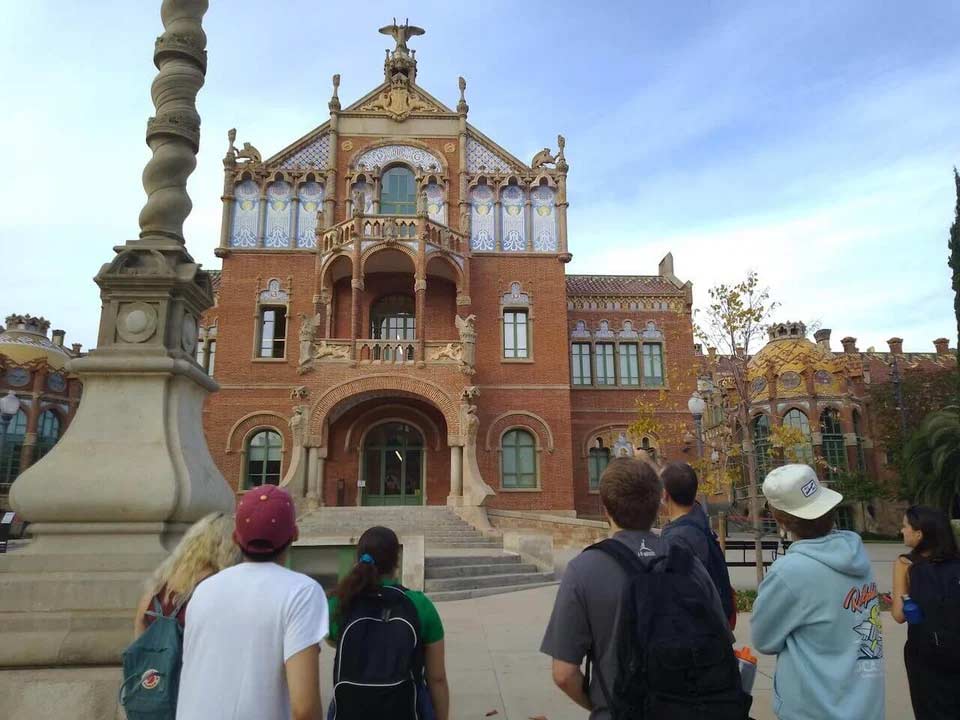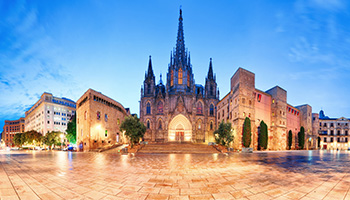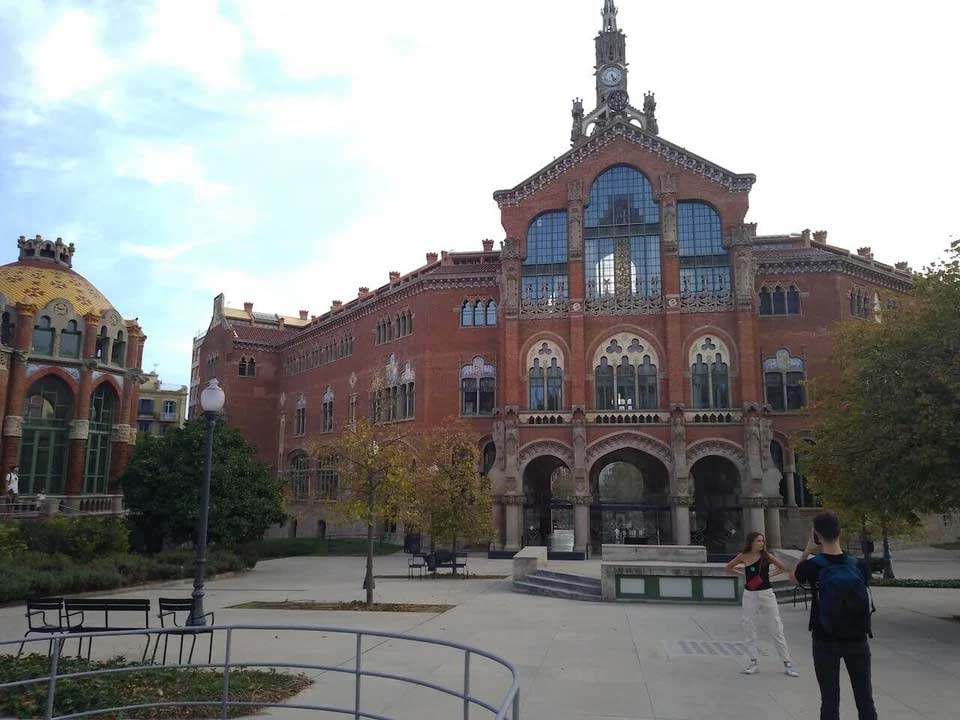
When you study abroad, you will be doing far more during your class time than sitting at your desk and listening to your professor give a lecture. One of the ways that my experience differs from other study abroad programs is the fact that it has smaller classes and a more interactive pedagogical approach. This is embodied by the various field studies that you will embark on throughout your classes here. A field study is essentially a mini field trip that you take during class time, where your professor will take you on a tour of a specific location in Barcelona that is relevant to what is being learned in class.
I had the pleasure of visiting l'Hospital de La Santa Creu i Sant Pau as a field study for my class on the Architectural History of Spain. Throughout this visit I was able to witness one of the most visually stunning hospitals in the entire world. It was built between the years 1902 and 1930 and was designed by Lluis Domi¨nech i Montaner, one of the most famous architects of the Catalan Modernisme movement. The Hospital was commissioned to replace the Old Hospital of Sant Creu, which had been in use since the 15th century. You can still visit this ancient hospital; it is located in Barcelona's el Raval neighborhood.
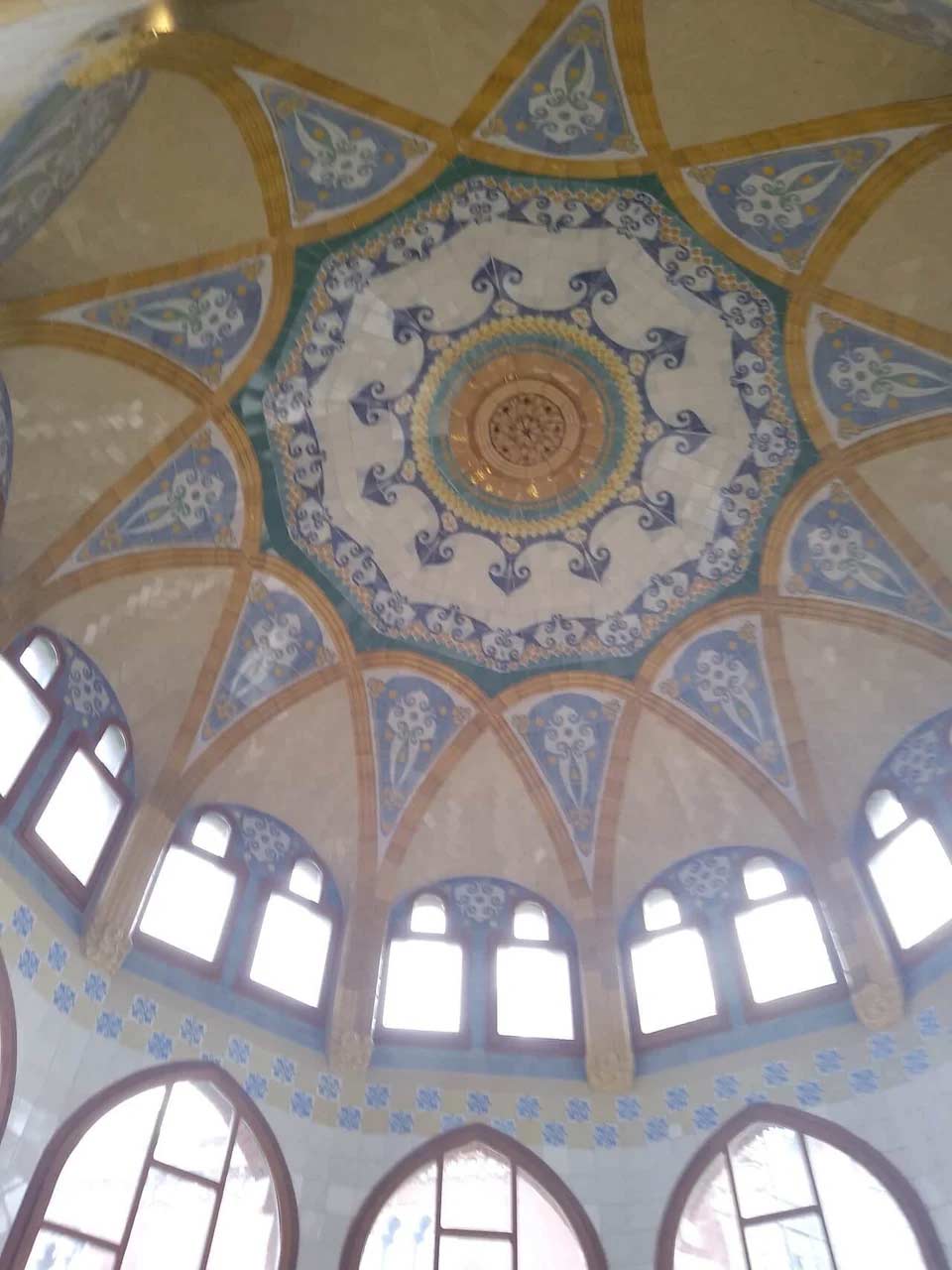
The hospital was built using the cutting-edge technology of the time, which was used to improve the quality of care provided. An example of one of these technological innovations was placing each hospital ward in different buildings, in order to mitigate the spread of contagious diseases. When first visiting this beautiful landmark, one will inevitably ask why a hospital was built in such an exquisite fashion. The reason behind this innovation was Montaner's belief that building a hospital that was visibly appealing would be beneficial to the patients. He thought that this would allow them to heal better by raising their spirits, compared to a bland and visually unappealing building.
Throughout my field study in the Hospital, I was able to witness firsthand one of the most stunning examples of modernist architecture. The Catalan Modernisme movement was one of the most significant architectural movements in the history of Barcelona. It took place from the late 19th to early 20th centuries, and featured many master architects, such as Antoni Gaudi and Lluis Domenech i Montaner.
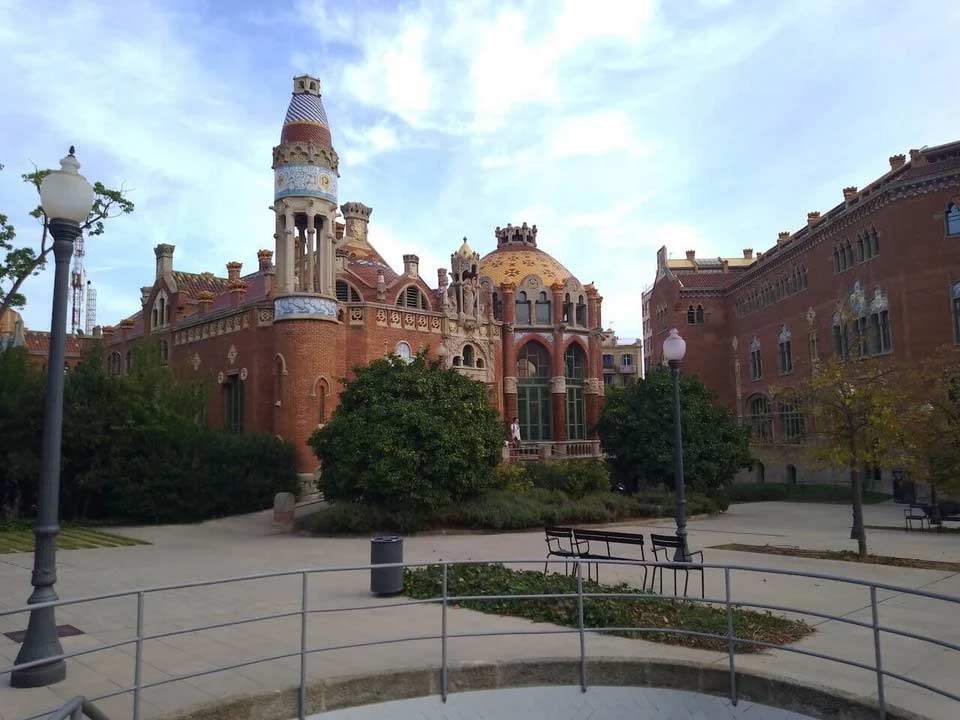
Key features of modernist architecture are the merging of various previous styles from Spain's history, such as Classical, Gothic, Romanesque, Baroque, and Islamic. Modernisme architects, particularly Antoni Gaudi, were also known for making buildings that were inspired by nature. Throughout my visit to the hospital, I was able to witness these characteristics firsthand. The buildings contain both round and pointed arches, characteristic of Romanesque and Gothic architecture respectively. You will also find many ornate mosaics, which resemble the various decorations found within buildings constructed in the Islamic style.
Overall, the Hospital of Santa Creu and Sant Pau is a stunning example of Modernisme architecture, and I would recommend that anyone interested in architecture or history visit this monument. Furthermore, I would recommend taking the Architectural History of Spain course while studying abroad here, as it allows you to contextualize the environment around you and learn about the city of Barcelona. Barcelona is a city with countless architectural gems, and studying abroad in the city is an unforgettable immersive experience, where you will find yourself in a city with a history of more than 2,000 years.
